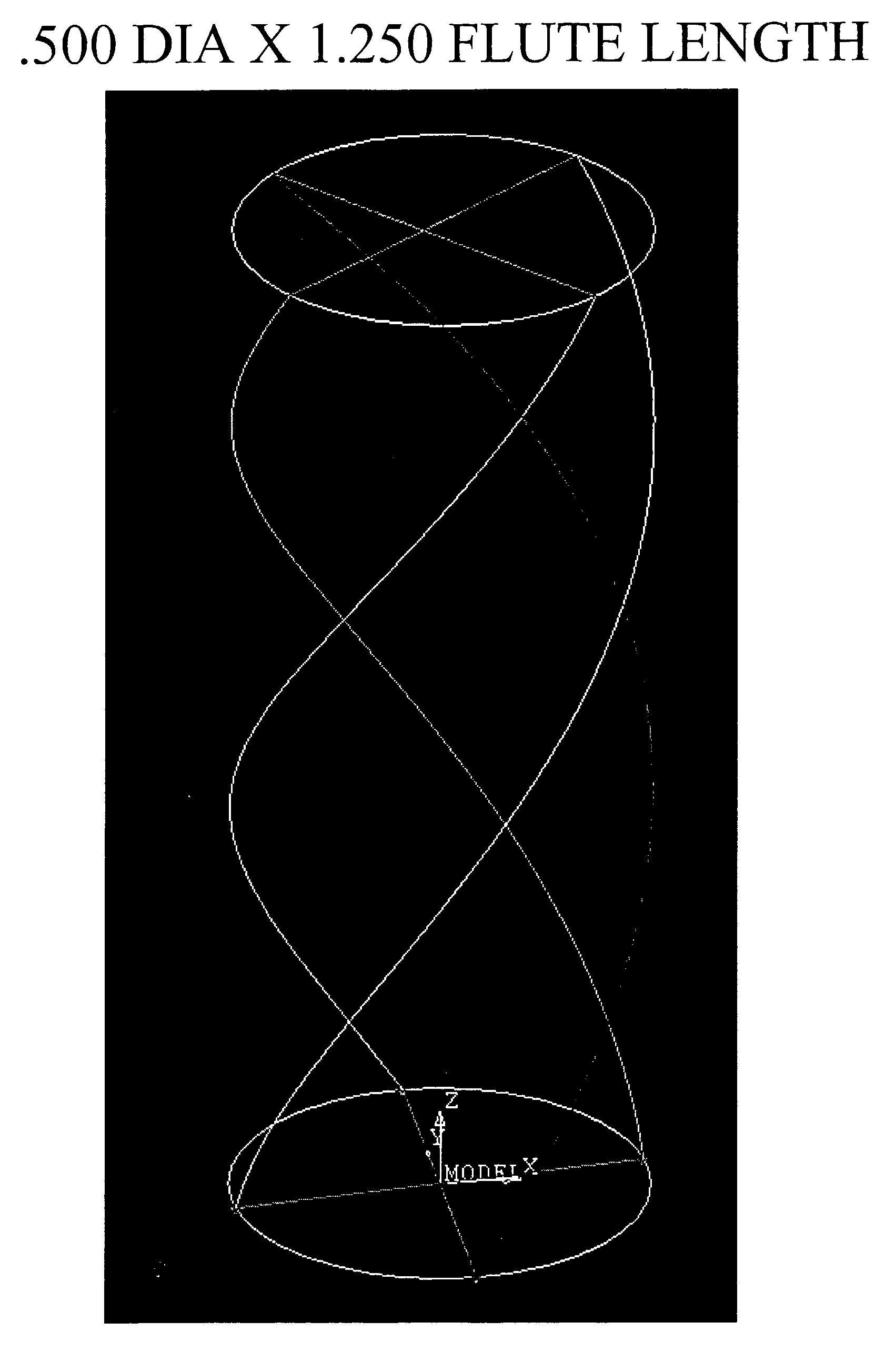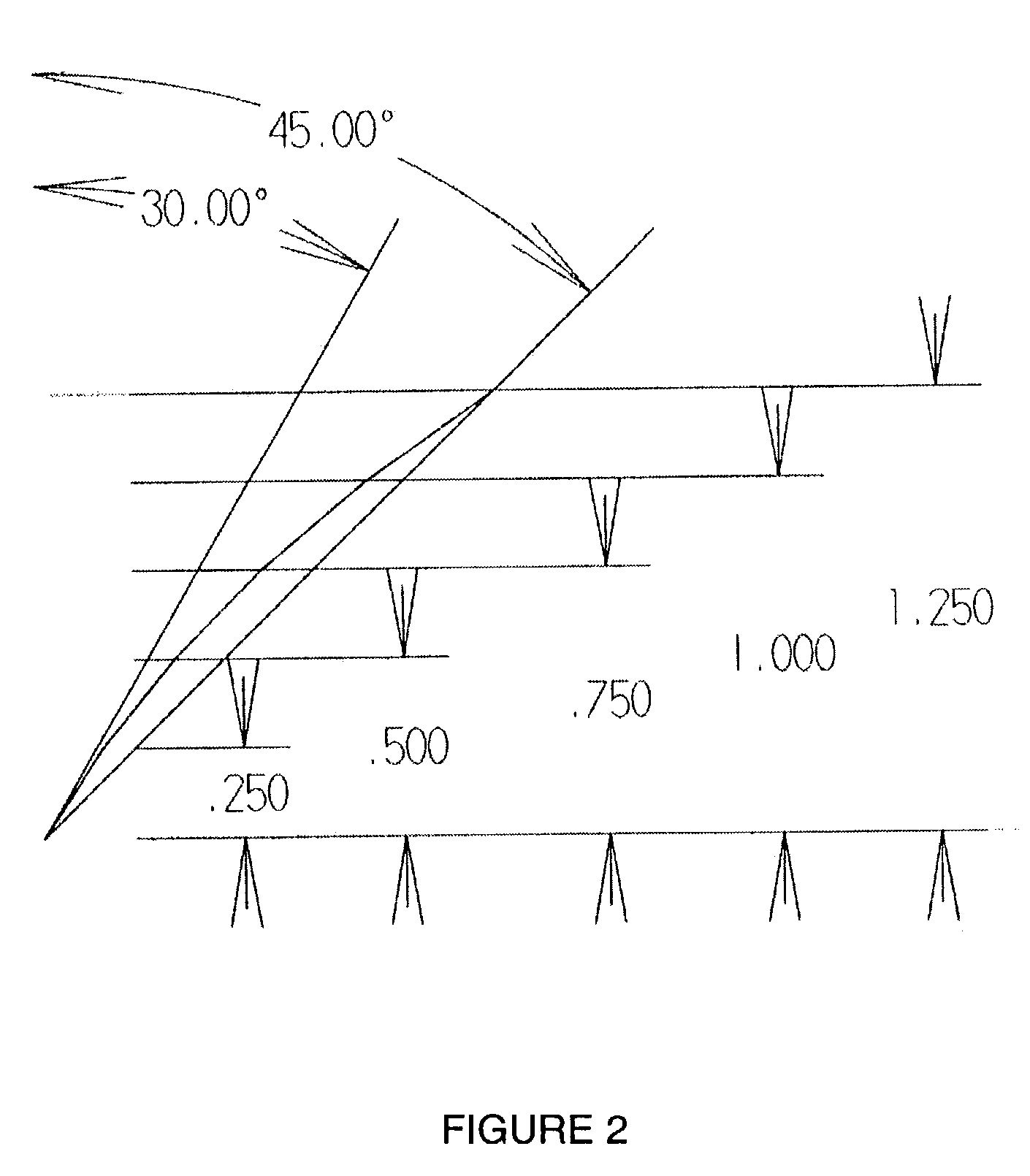Variable helix cutting tools
a cutting tool and variable technology, applied in the field of variable helix cutting tools, can solve the problems of not being suitable for a particular application, affecting the cutting effect of the tool, so as to improve the cutting action and tool life, reduce the manufacturing stress on the machine, and reduce the length of the chip
- Summary
- Abstract
- Description
- Claims
- Application Information
AI Technical Summary
Benefits of technology
Problems solved by technology
Method used
Image
Examples
Embodiment Construction
[0036]As discussed in the Background, this invention resides in tools, including but not limited to end mills, including a variable helix within a single flute, as well as variable helix(s) in multi-flutes. The various embodiments reduce or eliminate chatter, in aggressive cutting as well as in finish machining processes. This enables a deeper depth of cut or metal removal rate and, in many cases, an increase in tool life.
[0037]The design(s) are not limited to even number of flutes, or the total number in general in that the geometries may range a 1-flute tool to a multi-flute tool of 10 flutes or more. Additionally, the variable helix angle(s) according to the invention may change from flute to flute or may remain the same from flute to flute. The particular combination(s) is based on application and / or manufacturing procedure for a given product's needed results.
[0038]Generally speaking, the design is not limited to each flute not being the same variable helix or combination of a ...
PUM
| Property | Measurement | Unit |
|---|---|---|
| angle | aaaaa | aaaaa |
| angle | aaaaa | aaaaa |
| angle | aaaaa | aaaaa |
Abstract
Description
Claims
Application Information
 Login to View More
Login to View More - R&D
- Intellectual Property
- Life Sciences
- Materials
- Tech Scout
- Unparalleled Data Quality
- Higher Quality Content
- 60% Fewer Hallucinations
Browse by: Latest US Patents, China's latest patents, Technical Efficacy Thesaurus, Application Domain, Technology Topic, Popular Technical Reports.
© 2025 PatSnap. All rights reserved.Legal|Privacy policy|Modern Slavery Act Transparency Statement|Sitemap|About US| Contact US: help@patsnap.com



